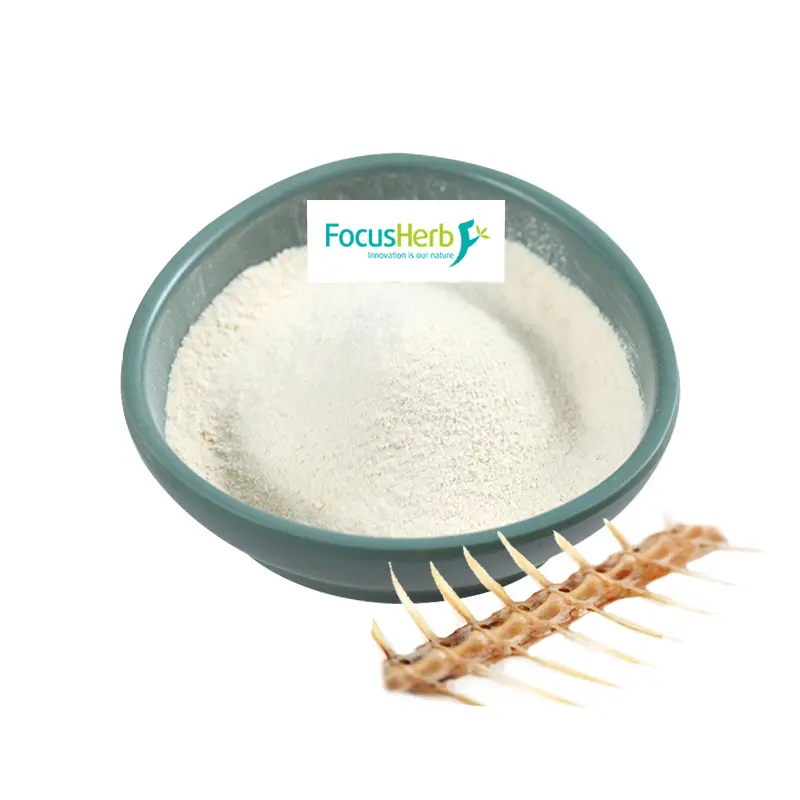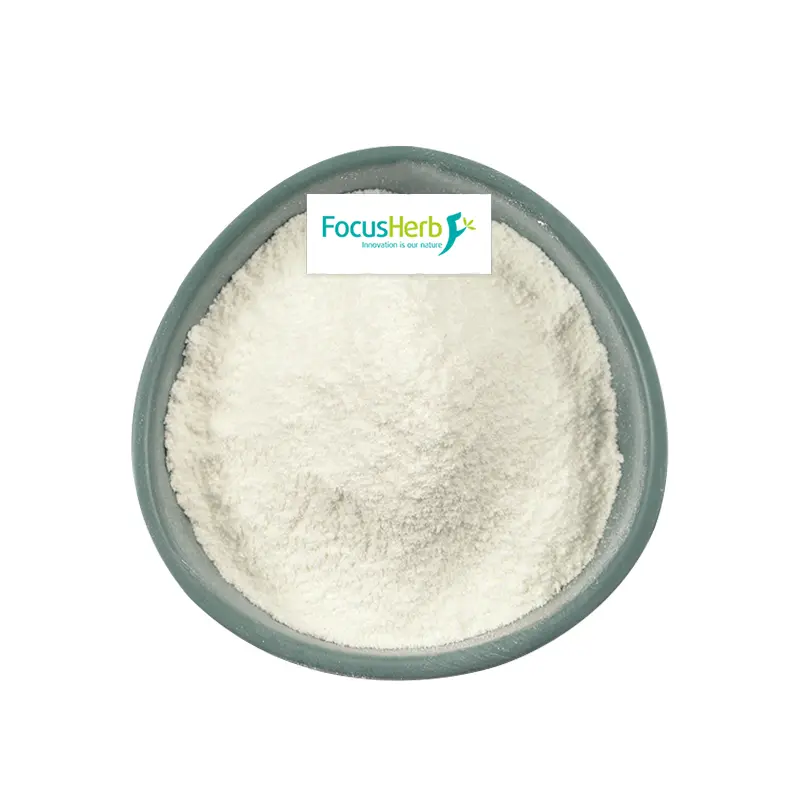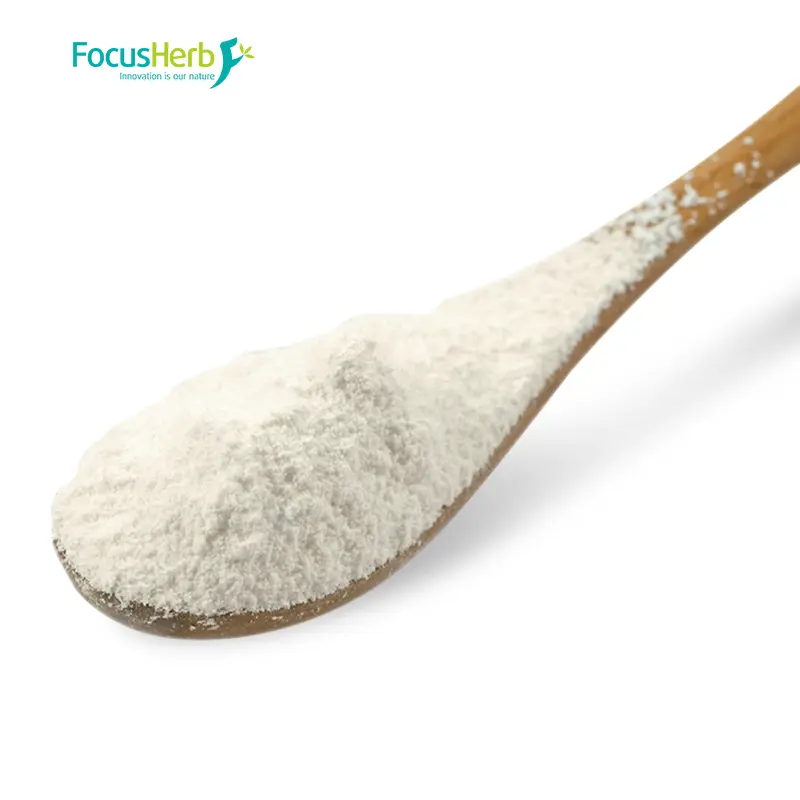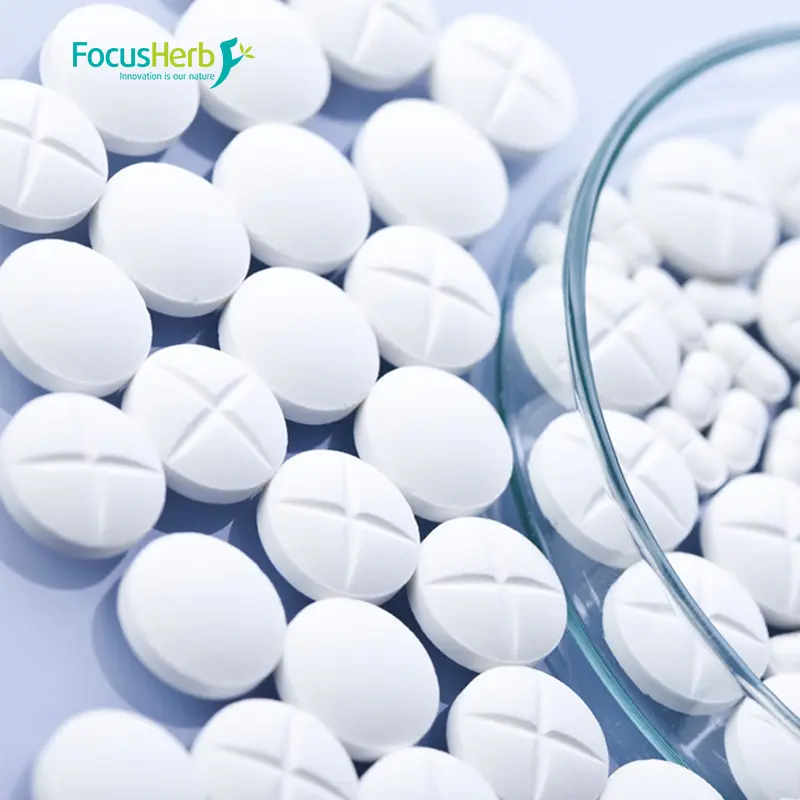Chondroitin sulfate, also known as CS, is essentially a sulfated glycosaminoglycan. It primarily consists of two monosaccharides, D-glucuronic acid and N-acetyl-D-galactosamine, linked together by specific glycosidic bonds to form a unique structure. Its molecular weight typically ranges from 25,000 to 30,000 Da, a size that confers unique physical and chemical properties among many biomolecules.
Chondroitin sulfates are classified into various subtypes, such as CS-A and CS-C, based on the position of the sulfate group within the molecular structure. While these subtypes share similar basic compositions, the position of the sulfate groups, much like the placement of key components in a building, contributes to their distinct biological activity. For example, chondroitin sulfate, due to its polyanionic properties, plays a vital role in water retention within the body, acting like an efficient sponge, helping tissues maintain adequate hydration. It also possesses anti-inflammatory properties, alleviating inflammation. It also regulates cell adhesion, influencing cell-cell interactions and tissue construction.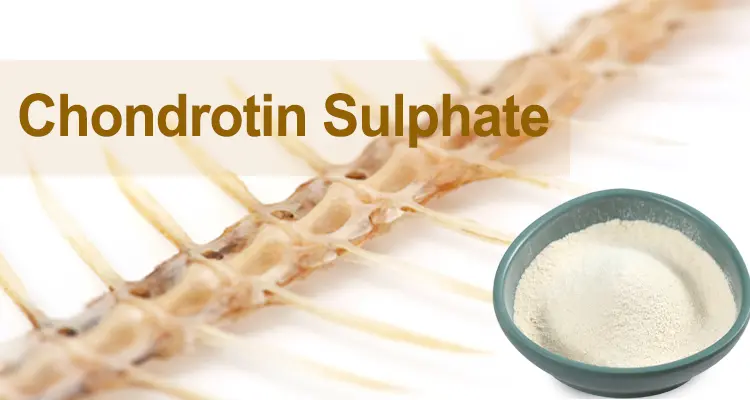
Natural Sources and Extraction Process
Chondroitin sulfate is widely found in animal cartilage, such as the hyoid bones of cattle and pigs. The cartilage in these areas is a rich source of chondroitin sulfate. Tendons, which connect muscles and bones, also contain a certain amount of chondroitin sulfate. Chondroitin sulfate is also found in intervertebral disc tissue, which provides cushioning and support in the human spine, and is a key component of this material.
In industrial production, chondroitin sulfate is primarily produced using enzymatic hydrolysis or alkaline extraction. Enzymatic hydrolysis is like hiring a team of specialized “molecular scissors” to precisely cut and separate chondroitin sulfate from cartilage tissue using specific enzymes. This method offers the advantages of mild reaction conditions and minimal molecular damage. Alkaline extraction utilizes an alkaline environment to dissolve chondroitin sulfate from the cartilage tissue, followed by a series of subsequent processing steps to obtain the target product. Following these extraction processes, chromatographic purification and other techniques are required to further remove impurities, ultimately yielding a highly pure (≥90%) chondroitin sulfate product. Because its structure is highly homologous to the natural cartilage matrix in the human body, it is like replacing an old part with a new one of the same material and design. This ensures excellent biocompatibility upon entry into the human body, ensuring its smooth acceptance and utilization without triggering a strong immune rejection reaction.
Core Benefit: Multi-System Health Protection Mechanism
(I) Core Role in Joint Health
In the field of joint health, chondroitin sulfate is a “joint guardian,” playing an irreplaceable role.
From the perspective of cartilage repair and lubrication, matrix metalloproteinases (MMPs) are like a “double-edged sword.” Under normal circumstances, they participate in the normal renewal and repair of body tissues and play a vital role in maintaining the body’s physiological balance. However, in certain pathological conditions, such as osteoarthritis, MMP activity can become abnormally elevated. Like an out-of-control “demolition team,” MMPs excessively degrade key components of articular cartilage, such as collagen and proteoglycans, causing severe damage to the cartilage structure. Chondroitin sulfate precisely inhibits this overactive MMP state, effectively restraining this out-of-control “demolition team” and reducing cartilage degradation. Furthermore, chondroitin sulfate actively promotes the synthesis of proteoglycans by chondrocytes. Proteoglycans are as important to articular cartilage as steel and cement are to tall buildings. They enhance cartilage’s elasticity and resistance to pressure, helping to repair damaged cartilage due to long-term wear and tear.
Chondroitin sulfate is also a key component of synovial fluid. Synovial fluid, like the lubricant in a machine, plays a vital role in the normal movement of joints. Chondroitin sulfate increases the viscosity of synovial fluid, enhancing its lubrication and significantly reducing friction during joint movement. Much like applying high-quality lubricant to rusty machine parts to make them run more smoothly, this effect of chondroitin sulfate can significantly alleviate joint pain and stiffness in patients with osteoarthritis, allowing for greater freedom of joint movement and improving their quality of life. In terms of anti-inflammatory and immune regulation, when inflammatory reactions such as rheumatoid arthritis occur, the NF-κB inflammatory pathway is activated, like a lit fuse, triggering a chain reaction that leads to the massive release of pro-inflammatory cytokines such as interleukin-6 (IL-6) and tumor necrosis factor-α (TNF-α). These pro-inflammatory cytokines act like troublemakers, exacerbating synovial inflammation and causing joint redness, swelling, and pain, severely impacting patients’ lives. Chondroitin sulfate, like a firefighter, can block the NF-κB inflammatory pathway, reducing the release of pro-inflammatory cytokines at the root, thereby effectively suppressing synovial inflammation. Therefore, chondroitin sulfate has significant value in the adjunctive treatment of rheumatoid arthritis, helping patients alleviate inflammatory symptoms and slow disease progression.
(II) Potential for Multi-Organ Protection
Chondroitin sulfate’s effects extend beyond joint health; it also demonstrates significant potential for multi-organ protection. In terms of cardiovascular health, dyslipidemia is a major risk factor for cardiovascular disease, particularly elevated low-density lipoprotein cholesterol (LDL-C). This cholesterol acts like “garbage” in blood vessels, easily depositing on their walls and gradually forming atherosclerotic plaques. These plaques narrow and stiffen blood vessels, impairing blood flow and increasing the risk of cardiovascular diseases such as coronary heart disease and myocardial ischemia. Chondroitin sulfate regulates lipoprotein metabolism, acting like a “master lipid regulator,” lowering LDL-C levels in the blood and reducing its deposition in blood vessel walls. It also inhibits the abnormal proliferation of smooth muscle cells in the blood vessels, preventing the thickening and hardening of the blood vessels caused by excessive smooth muscle cell growth. This prevents the formation of atherosclerotic plaques from multiple angles, safeguarding the health of the cardiovascular system. In clinical practice, chondroitin sulfate is often used as an adjunctive treatment for conditions such as coronary heart disease and myocardial ischemia, helping patients improve cardiovascular function and reduce disease risk.
From the perspective of neurological and skin repair, the blood-brain barrier is a crucial defense for the brain, preventing harmful substances from entering the brain and protecting the normal function of neurons. Thanks to its unique molecular structure and biological properties, chondroitin sulfate is able to cross the blood-brain barrier, acting like a courageous “messenger” and entering the brain to protect neurons. When symptoms such as neuralgia or migraines occur, chondroitin sulfate can improve symptoms and alleviate pain by regulating the release of neurotransmitters and inhibiting neuroinflammatory responses.
When applied topically, chondroitin sulfate becomes a “caring protector” for the skin. The moisture content of the stratum corneum plays a crucial role in maintaining skin health and appearance. Insufficient moisture can lead to dryness, roughness, and loss of elasticity. Chondroitin sulfate binds tightly to the moisture in the stratum corneum, forming a natural water-retaining barrier that acts like a “moisturizing coat” for the skin, helping to lock in moisture, increase hydration, and maintain a hydrated appearance. It also promotes skin cell metabolism, enhances skin elasticity, reduces wrinkles, and leaves skin firmer and smoother. These remarkable benefits have made chondroitin sulfate a common ingredient in many anti-aging skincare formulas and a popular choice among consumers.
Safety and Potential Risks: Prerequisites for Appropriate Use
(I) Adverse Reactions and Individual Differences
While chondroitin sulfate offers numerous health benefits, its use requires careful consideration of potential adverse reactions and individual differences.
In terms of common side effects, oral administration is the most common method of use. However, it can cause gastrointestinal discomfort, such as nausea and bloating. This is primarily due to the sulfate ions contained in chondroitin sulfate, which, upon entering the gastrointestinal tract, interact with digestive fluids and irritate the gastric mucosa. Much like rough sandpaper rubbing against delicate skin, irritation of the gastric mucosa can easily lead to discomfort such as nausea and bloating.
While injections or eye drops offer unique advantages in treating specific conditions, the possibility of allergic reactions should not be ignored, potentially resulting in symptoms such as rashes and itching. In a clinical setting, a 56-year-old female patient was hospitalized for lumbar disc herniation. While receiving an intravenous infusion of chondroitin sulfate, after approximately 10ml had been infused, she suddenly developed symptoms such as chest tightness, shortness of breath, orthopnea, and generalized itching. Small, rice-sized red spots appeared on her chest and upper limbs, followed by widespread urticaria. This is a typical allergic reaction to chondroitin sulfate. To prevent this severe allergic reaction, a skin sensitivity test is often performed before using injections or eye drops, similar to a skin test performed before antibiotics. This method identifies individuals who may be allergic to chondroitin sulfate and reduces the risk of allergic reactions.
Chronic chondroitin sulfate should be used with caution in certain populations. Chondroitin sulfate should be used with caution in those with a predisposition to bleeding because it has a certain anticoagulant effect, acting as an inhibitor of blood clotting. For individuals with a predisposition to bleeding, this anticoagulant effect can exacerbate the risk of bleeding, potentially causing persistent bleeding from wounds or increasing the likelihood of internal bleeding. Pregnant and breastfeeding women are in a unique physiological state, and the health of the fetus or infant is closely linked to the mother’s. The effects of chondroitin sulfate on the fetus or infant are still unclear, so these groups of people should use it under the strict guidance of a doctor. People with hepatic and renal insufficiency have impaired metabolism and excretion in their liver and kidneys. Once chondroitin sulfate enters the body, it must be metabolized and excreted by these organs. This impaired metabolism and excretion of chondroitin sulfate can be impaired, leading to its accumulation and increasing the likelihood of adverse reactions. To ensure safety, these individuals should also use chondroitin sulfate with caution, under the guidance of a doctor, and based on their specific liver and kidney function. Furthermore, regardless of the patient population, long-term, high-dose use (>1500mg/day) of chondroitin sulfate should be avoided to prevent unnecessary harm to the body.
(II) Drug Interactions
During drug treatment, patients often need to take multiple medications simultaneously to treat different conditions or symptoms. When chondroitin sulfate is used in combination with other medications, drug interactions may occur, affecting drug efficacy and even increasing the risk of adverse reactions. Special attention is required when chondroitin sulfate is used in combination with anticoagulants such as warfarin. Warfarin is a commonly used anticoagulant in clinical practice. It inhibits the synthesis of vitamin K-dependent coagulation factors, thereby exerting its anticoagulant effect to prevent and treat thrombotic disorders. Chondroitin sulfate itself also has some anticoagulant activity. When used in combination with warfarin, it acts like two “anticoagulants” combined, potentially significantly enhancing bleeding effects. For example, it may cause minor bleeding symptoms such as bruising, nosebleeds, and gum bleeding. In severe cases, it may even lead to life-threatening conditions such as gastrointestinal bleeding and cerebral hemorrhage. Therefore, when patients need to use chondroitin sulfate and anticoagulants simultaneously, coagulation function must be closely monitored. Regular monitoring of indicators such as prothrombin time (PT) and international normalized ratio (INR) should be used to adjust the drug dosage in a timely manner to ensure anticoagulant efficacy while minimizing the risk of bleeding. When chondroitin sulfate is taken with diuretics, it can affect electrolyte balance. Diuretics are a class of drugs that increase the excretion of electrolytes (such as sodium and potassium) by promoting urination through the kidneys. They are commonly used to treat conditions such as edema and hypertension. Chondroitin sulfate’s metabolism in the body may interfere with the diuretics’ ability to regulate electrolytes, leading to electrolyte imbalances. For example, it may cause abnormally low or high blood potassium levels. Abnormal fluctuations in blood potassium levels can affect the normal function of vital organs and tissues such as the heart and muscles, leading to symptoms such as arrhythmias and muscle weakness. To minimize the effects of this interaction, it is recommended to take chondroitin sulfate and diuretics two hours apart. This can reduce the risk of drug interactions, allowing the two drugs to exert their respective therapeutic effects relatively independently. It also allows physicians to better monitor and adjust drug dosages based on the patient’s specific condition, ensuring medication safety and therapeutic efficacy.
Application Areas: From Clinical Treatment to Daily Health Care
(I) Diverse Applications in the Medical Field
In the medical field, chondroitin sulfate, with its unique physiological activity, has demonstrated diverse application value, providing an effective means for the treatment and prevention of numerous diseases.
1. Treatment of Orthopedic Diseases
Chondroitin sulfate plays a crucial role in the treatment of orthopedic diseases. Osteoarthritis is a common degenerative joint disease characterized by the wear and destruction of articular cartilage, leading to joint pain, swelling, stiffness, and dysfunction, severely impacting patients’ quality of life. Rheumatoid arthritis is an autoimmune disease that, in addition to joint symptoms, can affect multiple systemic systems. For these chronic diseases, chondroitin sulfate tablets or capsules are an important option for long-term management. Through the mechanisms described above, such as promoting cartilage repair and inhibiting inflammation, it fundamentally improves the metabolism and structure of articular cartilage, alleviating joint dysfunction. It acts like a “repair energy” for damaged joints, helping patients maintain relative joint stability and reducing pain and discomfort. During acute attacks, joint inflammation is often more severe, with patients experiencing sudden onset of severe joint pain, increased swelling, and severely limited mobility. This is when chondroitin sulfate injections play a crucial role. By injecting chondroitin sulfate directly into the joint cavity, the drug can quickly reach the affected area and rapidly alleviate joint inflammation, acting like a “fire extinguisher” for an inflamed joint. This effectively alleviates the patient’s acute symptoms, helping them through the acute phase of the disease and buying time for subsequent treatment and recovery.
2. Adjunctive Cardiovascular Therapy
Cardiovascular disease is a major global threat to human health. For example, atherosclerosis, a key pathological basis for cardiovascular and cerebrovascular disease, can lead to vascular narrowing and blockage, increasing the risk of serious events such as myocardial infarction and stroke. Myocardial ischemia, caused by insufficient blood supply to the coronary arteries, results in oxygen deprivation to myocardial cells, causing symptoms such as angina pectoris and, in severe cases, myocardial infarction. Chondroitin sulfate, as an adjunctive treatment for atherosclerosis and myocardial ischemia, plays a crucial role in protecting the integrity of the vascular endothelium. Endothelial cells act like a protective membrane lining the inner walls of blood vessels, maintaining normal vascular function and preventing harmful substances from the blood from penetrating the vessel walls. Damage to the endothelium can easily trigger a series of pathological changes, leading to the development of atherosclerosis. Chondroitin sulfate can regulate the metabolism and function of endothelial cells, enhancing their barrier function and reducing the erosion of harmful substances on the vessel walls, thereby reducing the risk of cardiovascular events and providing additional protection for cardiovascular and cerebrovascular health. In clinical practice, doctors often combine chondroitin sulfate with other medications based on the patient’s specific condition to achieve better therapeutic effects, help improve cardiovascular and cerebrovascular function, and enhance quality of life.
(II) Functional Health and Daily Chemical Products
1. Dietary Supplements
In the functional health field, chondroitin sulfate is often combined with glucosamine to produce dietary supplements such as glucosamine chondroitin tablets. Glucosamine, a natural amino monosaccharide, is an important precursor for the synthesis of proteoglycans in articular cartilage. It promotes proteoglycan synthesis by chondrocytes, enhancing cartilage’s elasticity and resistance to compression. Chondroitin sulfate primarily promotes cartilage repair, lubricates joints, and fights inflammation. It works synergistically with glucosamine, creating a “golden pair” that promotes cartilage repair and maintains joint health. This combination is particularly suitable for middle-aged and elderly individuals. With aging, joint cartilage wears down, joint function declines, and symptoms such as joint pain and stiffness are more common. Supplementing with glucosamine and chondroitin can help slow the progression of joint degeneration and alleviate joint discomfort. For athletes, frequent high-intensity exercise places significant stress on joints, which can easily damage articular cartilage. Taking glucosamine and chondroitin supplements can prevent and repair exercise-induced joint injuries, maintain joint health, improve athletic performance, and reduce the risk of sports injuries.
2. Cosmetic Additive
In daily chemical products, chondroitin sulfate is a key ingredient in cosmetic formulas due to its unique moisturizing and anti-inflammatory properties. Adding chondroitin sulfate to eye creams can effectively improve dry skin around the eyes. The skin around the eyes is one of the thinnest and most fragile parts of the human skin, susceptible to environmental influences, leading to dryness and fine lines. Chondroitin sulfate binds tightly to the moisture in the stratum corneum around the eyes, forming a moisturizing barrier that provides ample moisture to the skin around the eyes, keeping it hydrated, reducing the appearance of fine lines, and making the eyes appear brighter and more vibrant. Adding chondroitin sulfate to face creams can also achieve a similar moisturizing effect, making facial skin smoother and more delicate, enhancing skin elasticity, and improving overall skin texture.
Chondroitin sulfate is particularly effective in post-operative skincare products. After surgery or skin trauma, the skin’s repair process requires the participation of a variety of nutrients and bioactive ingredients. Chondroitin sulfate not only moisturizes but also promotes the proliferation and migration of skin cells, accelerating wound healing. Like a “repair master,” it helps damaged skin tissue quickly restore its normal structure and function, reducing scarring and restoring skin to a healthy state. Therefore, the use of chondroitin sulfate in daily chemical products provides more options and guarantees for people’s skin care and health.
Key Differences from Glucosamine and Chondroitin: Basis for Precise Selection
In the field of joint health, chondroitin sulfate and glucosamine and chondroitin are often mentioned. While both are beneficial for joint health, they differ significantly in composition, source, mechanism of action, and applicable scenarios. These differences provide a precise basis for choosing between them.
(I) Differences in Composition and Source
Chondroitin sulfate is a single glycosaminoglycan extracted from animal cartilage, such as the hyoid bone, tendon, and intervertebral disc tissue of cattle and pigs. Glucosamine and chondroitin, on the other hand, are a complex ingredient, consisting of glucosamine and chondroitin sulfate. Glucosamine is primarily extracted from shrimp and crab shells, while chondroitin sulfate, like chondroitin sulfate products, is derived from animal cartilage. This difference in composition and source is like the difference between a single-ingredient dish and a dish with multiple ingredients, laying the foundation for their different subsequent effects.
(II) Comparison of Mechanisms of Action
Chondroitin sulfate primarily inhibits the activity of cartilage-degrading enzymes (such as MMPs), reducing cartilage matrix breakdown. It also promotes synovial fluid production and increases its viscosity, providing better lubrication for the joints. This acts like a constant supply of high-quality lubricant to the joints, reducing friction between parts. The glucosamine in glucosamine chondroitin primarily replenishes the cartilage matrix, activating chondrocytes to synthesize more proteoglycans and collagen fibers, promoting cartilage repair and regeneration. This acts like providing “building blocks” for damaged cartilage, allowing it to be rebuilt.
(III) Analysis of Suitable Uses
Due to its excellent anti-inflammatory and lubricating properties, chondroitin sulfate is particularly suitable for patients with moderate to severe joint inflammation. When joint inflammation is severe, with noticeable symptoms such as redness, swelling, heat, and pain, chondroitin sulfate can effectively alleviate inflammation and relieve pain. It also plays a role in maintaining vascular health, making it beneficial for those concerned about cardiovascular health. Because glucosamine chondroitin focuses on cartilage repair, it is more suitable for preventing early joint wear and repairing mild cartilage damage. For example, young sports enthusiasts have slight wear and tear on their joints during daily exercise. The use of glucosamine chondroitin can repair damaged cartilage in time and keep the joints in good condition.
As a natural cartilage protector, chondroitin sulfate has been clinically validated for its benefits in joint health, cardiovascular maintenance, and tissue repair. Its health benefits can be maximized by choosing the right dosage form (oral, topical, or injectable), paying attention to dosage safety (800-1200mg daily is recommended), and combining it with lifestyle interventions such as exercise and rehabilitation. With breakthroughs in targeted delivery technology and synthetic biology, chondroitin sulfate is expected to achieve even wider application in precision medicine.



















